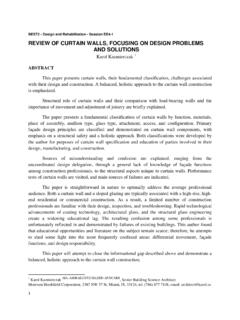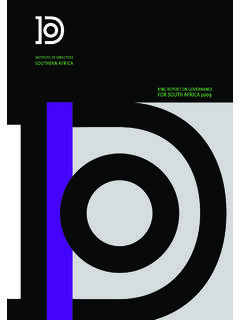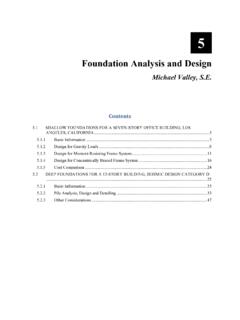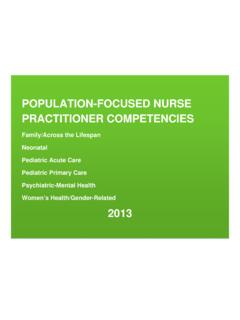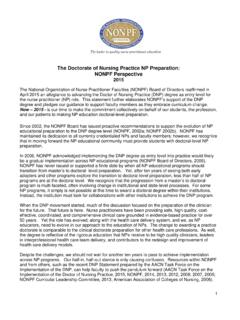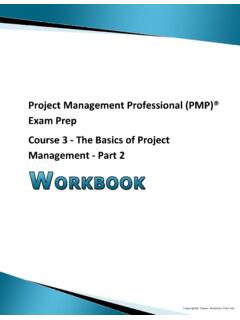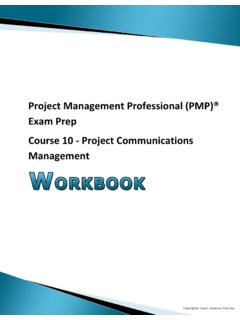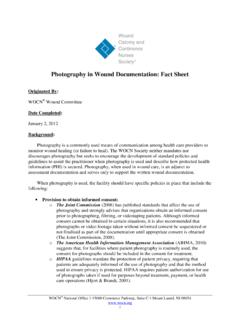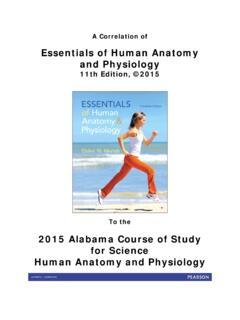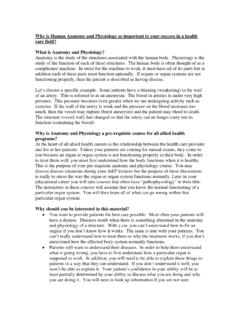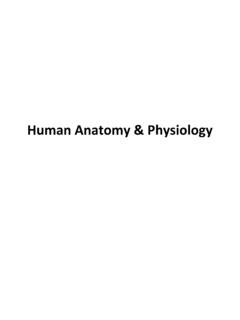Transcription of Journal of the Human Anatomy and Physiology Society
1 Validation of 3D model of the PelvisExam Viewing Associated with Future Exam SuccessSelf-Assessment Quiz Associated with Exam PerformanceAnkylosing Spondylitis: Anatomical Associations Alphabet Soup of Active LearningIncreasing Hands-On Learning for UndergraduatesHands-On Activity: A Soda Bottle Nephron Model Jazz as a Model for Classroom PracticeSaving Christmas: Analogy for Compensatory Mechanisms of the HeartTeaching Acid-Base Homeostasis: A problem Based ModelVolume 22, Issue 2 August 2018 Established in 1989 by Human Anatomy & Physiology TeachersJournal of the Human Anatomy and Physiology SocietyHAPSE ducatorPRESIDENTJudi Riggs Day DIRECTORSC entral: Steve Kish IA, IL, IN, MI, MN, OH, WI, MOInternational: MB, ON, all other non-Canadian membersEastern: Elizabeth Hodgson CT, DC, DE, MA, MD, NH, NJ, NY, PA, RI, VA, VT, WVInternational: NB, NF, NS, PE, QCSouthern: Rachel Hopp AL, AR, FL, GA, KY, LA, MS, NC, OK, SC, TN, TX; Territory: PRWestern: Elizabeth Pennefather-O Brien AK, AZ, CA, CO, HI, ID, IS, MY, NE, ND, NM, NV, OR, SD, UT, WA, WYInternational: AB, BC, NU, NT, SK, YTHAPSBOARD OF DIRECTORS SUMMER 2018 TABLE OF CONTENTS EDUCATIONAL RESEARCHHips Don t Lie: Expert Opinions Guide the Validation of a Virtual 3D Pelvis Model for Use in Anatomy Education and Medical Training Edgar R.
2 Meyer, MAT, Amber M. James, MCA and Dongmei Cui, MD (hon), PhD ..104 The Impact of Face-to-Face Exam Viewing on Future Exam Performance in a First Term Anatomy and Physiology Course Krista L. Rompolski, PhD, Michael Bruneau Jr, PhD, Stephen Samendinger, PhD ..120 Voluntary Web-Based Self-Assessment Quiz Use is Associated with Improved Exam Performance, Especially for Learners with Low Prior Knowledge Jenifer C. Utz, PhD and Matthew L. Bernacki, PhD ..129 CURRENT TOPICS IN Anatomy AND PHYSIOLOGYA nkylosing Spondylitis: Anatomical Associations and Novel Therapeutic Research Sarah Cooper, MEd, Mark Tieleman, Randy Tammara, PharmD, John Daley, PhD ..136 PERSPECTIVES IN TEACHINGA lphabet Soup of Active Learning: Comparison of PBL, CBL, and TBL Mari K. Hopper, PhD ..14 4 Development of an Undergraduate Course Designed to Increase Hands-On Research Opportunities for Students at Colorado State University Leslie Stone-Roy, PhD, Colorado State University.
3 150 Inexpensive Hands-On Activities to Reinforce Basic Physiological Principles: Details of a Soda Bottle Nephron Model Vicki Abrams Motz, PhD, Rema G. Suniga, PhD, Jacqueline Runestad Connour, PhD ..159 Jazz As a Model For Classroom Practice Harold Modell, PhD ..165 Saving Christmas: Use of Analogy to Teach The Compensatory Mechanisms of the Heart in Heart Failure Krista L. Rompolski, PhD ..171 Teaching Acid-Base Homeostasis Using Collaborative, Problem-based Learning and Human Patient Simulators in a Physiology Laboratory Mary Vagula, PhD and He Liu, PhD ..176104 HAPS Educator Journal of the Human Anatomy and Physiology Society August 2018 The HAPS-Educator, The Journal of the Human Anatomy and Physiology Society , aims to foster teaching excellence and pedagogical research in Anatomy and Physiology education. The Journal publishes articles under three categories. Educational Research articles discuss pedagogical research projects supported by robust data.
4 Perspectives on Teaching articles discuss a teaching philosophy or modality but do not require supporting data. Current Topics articles provide a state-of-the-art summary of a trending topic area relevant to Anatomy and Physiology educators. All submitted articles undergo peer-review. Educational Research articles will additionally be reviewed for the quality of the supporting data. All submissions are disseminated to non-HAPS members one year post-publication via the Life Sciences Teaching Resource Community database. The HAPS Educator is published in April, August and December. The deadlines for submission are March 15, July 15 and November Guidelines for AuthorsInformation for authors on the terms of submission, the submission procedure, formatting the manuscript, formatting the references, the submission of illustrations, and the peer review process, is available LinksUse the Manuscript Submission form for HAPS Educator submissions and the Teaching Tips for A&P (Snippets) form for shorter teaching tips.
5 You do not need to be a member of the Human Anatomy and Physiology Society (HAPS), to publish in the HAPS Educator. For more information see the complete submission guidelines using the link and animal research subjectsResearch that includes dissection and manipulation of animal tissues and organs must adhere to the Human Anatomy and Physiology Society (HAPS) Position Statement on Animal Use, which states that the use of biological specimens must be in strict compliance with federal legislation and the guidelines of the National Institutes of Health and the United States Department of Agriculture. The use of humans or animals in research must fulfill clearly defined educational animals must be handled in accordance with the author s institutional guidelines and informed consent must be obtained for studies on humans. It is the responsibility of the author(s) to secure IRB approval for research on must obtain permission to reproduce any copyright material and the source of this material must be acknowledged in their manuscript.
6 DisclaimerResponsibility for (1) the accuracy of facts, (2) the expression of opinion and (3) the authenticity of any supporting material presented by the author rests solely with the author. The HAPS-Educator, its publishers, editors, reviewers and staff, take no responsibility for these THE HAPS-Educator Editor if you have additional questions or HAPS Educator is published electronically by The Human Anatomy and Physiology Society (HAPS). The written and visual contents of this magazine are protected by copyright. Temporary permission is granted for members of the Human Anatomy and Physiology Society to read it on-line, to print out single copies of it, and to use it unchanged for any non-commercial research and educational purpose, including making copies for classroom use provided the materials are not modified and appropriate acknowledgment is made of the source. All other uses of this material are conditional and require the consent of the editor - and when applicable, the other copyright owners.
7 Requests for permission should be directed to the editor via the contact information stated above. 2018 All rights reserved. Editor-in-Chief - Kerry Hull, PhDManaging Editor - Sarah CooperReviewer Panel Aakanksha AngraLynne BerdanierCarol BritsonJackie CarnegieJanet CasagrandKeely CassidyJames ClarkGreg CrowtherLeslie DayJames DoyleTracy EdigerHisham ElbatarnyCamille FreemanMindi FriedJennifer HilliyerJon JacksonRowena KorpalBrenda del MoralDavid EvansNataliya GalifianakisAnya Goldina Elizabeth GranierMichael IbiwoyeSara KlenderBarbie KleinTres KutcherRichelle LaipplyCleveland Lane, LawrenceRoberta MeehanAmber MillerMichele MooreTrac y M ower ySoma MukhopadhyayZvi OstrinKatrina PorterWendy RappazzoEd RaynesPeter Reuter Rebecca RomineKrista RompolskiHeather RudolphJustin ShafferDisa SmeeLola SmithZoe SoonMaria SquireEditorial BoardKerry HullSarah CooperNataliya GalifianakisTracy EdigerJacquie CarnegieJon JacksonMurray JensenJustin ShafferRachel Hopp105 HAPS Educator Journal of the Human Anatomy and Physiology Society August 2018 continued on next pageHips Don t Lie: Expert Opinions Guide the Validation of a Virtual 3D Pelvis Model for Use in Anatomy Education and Medical TrainingEdgar R.
8 Meyer, ,3; Amber M. James, ; and Dongmei Cui, (hon), ,2,31 School of Graduate Studies in the Health Sciences, University of Mississippi Medical Center2 School of Medicine, University of Mississippi Medical Center3 Department of Neurobiology & Anatomical Sciences, Clinical Anatomy Division, University of Mississippi Medical Center, 2500 N. State St., Jackson, MS 39216 Corresponding Author: Edgar R. Meyer, three-dimensional (3D) anatomical models have become popular in the education of students in graduate and undergraduate-level Anatomy courses, including Anatomy and Physiology . There is a need for more research on the effectiveness of these models on student learning, especially in Anatomy and Physiology , and on the validation of the models implemented in Anatomy education. This study focuses on the development of a list of criteria for validating 3D models of the pelvis, using a four-round Delphi method.
9 The Delphi method successfully confirmed the validity of the final list of pelvic criteria, each item with an item content validity index (I-CVI) The average scale content validity index (S-CVI/Ave) of the entire list was calculated to be rigorously valid ( ). These valid pelvic criteria will be used in future studies to inform additions to an existing virtual 3D model of the pelvis and validate completed virtual 3D pelvic models. words: Anatomy education, virtual 3D models, pelvic models, Delphi method, medical trainingIntroductionAnatomy education has undergone many changes throughout its history. One such change has been the implementation of virtual 3D anatomical models in teaching diverse cohorts of Anatomy students. Virtual 3D anatomical models have been shown to be beneficial to students of Anatomy in both medical (Qayumi et al. 2004, Nicholson et al. 2006, Brown et al. 2012, Cui et al. 2017) and dental programs (Maggio et al.)
10 2012). Thus, virtual 3D Anatomy models of structures in intricate or small areas of the body can be used to improve medical student retention of the corresponding anatomical addition, virtual 3D anatomical models show promise in undergraduate Anatomy education in both undergraduate medicine (Hisley et al. 2008, Marsh et al. 2008, M ller-Stich et al. 2013) and kinesiology (Hoyek et al. 2014). Womble (1999) showed that undergraduate students in an Anatomy and Physiology course favored the use of virtual 3D Anatomy , but more research is needed to determine the impact of virtual 3D Anatomy on undergraduate education in Anatomy and Physiology . In medical education, 3D anatomical models are frequently used to help medical trainees master Human Anatomy . In the clinical setting, virtual 3D models are used to guide residents and physicians in devising optimal surgical approaches, accessing specific anatomical regions, and excising or repairing structural pathology.
